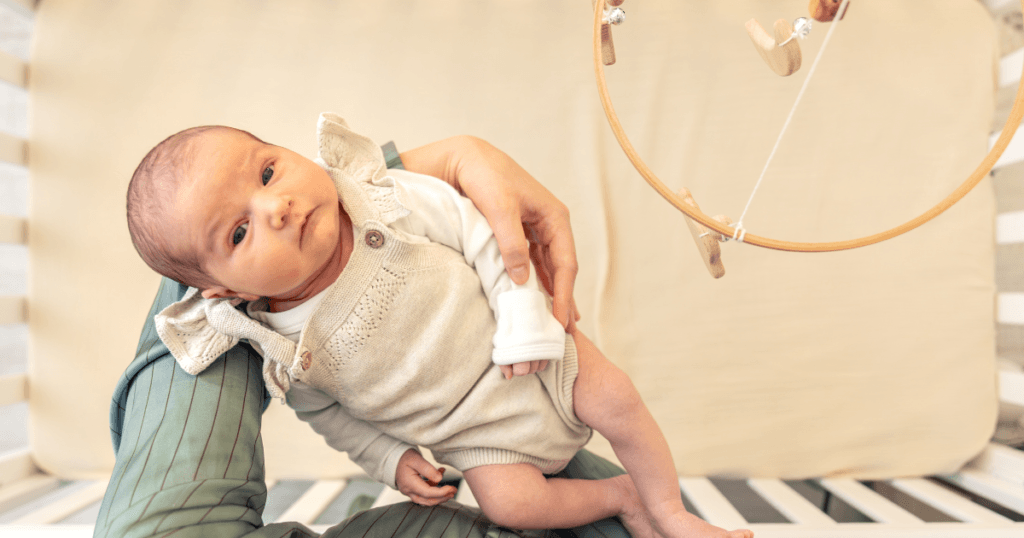Becoming a parent brings an exciting new chapter in life, but it also comes with its fair share of challenges. Among these is the often-elusive task of learning how to get newborn to sleep in bassinet comfortably. If you’re feeling frustrated and sleep-deprived, you’re not alone. This guide is designed to provide you with actionable strategies to help your baby transition smoothly to bassinet sleep, ensuring peaceful nights for both of you.
Table of Contents
Why Won’t Your Newborn Sleep in a Bassinet? Common Challenges
Understanding why your newborn won’t sleep in a bassinet is the first step toward solving the issue. Let’s explore some common reasons:
Understanding Newborn Sleep Patterns
- Short Sleep Cycles: Newborns experience shorter sleep cycles than adults, which can lead to frequent awakenings.
- Adjustment to Life Outside the Womb: After spending months in a snug, warm environment, your baby needs time to adjust to sleeping independently in a bassinet.
Common Reasons Your Baby Refuses the Bassinet
- Startle Reflex: Babies often wake themselves up due to sudden movements, known as the Moro reflex.
- Separation Anxiety: Your newborn may prefer being held or close to you for comfort.
- Uncomfortable Environment: Temperature, lighting, or noise levels might not be ideal for helping your newborn sleep in a bassinet.
Preparing the Bassinet for Maximum Comfort

A comfortable and safe bassinet setup can make all the difference. Here are some tips:
Choosing the Right Bassinet
- Look for a bassinet with a firm, flat surface that complies with safety standards.
- Ensure it has breathable sides to promote airflow and reduce the risk of suffocation.
Creating a Cozy Sleeping Environment
- Swaddle or Sleep Sack: Wrapping your baby snugly can mimic the security of the womb.
- Optimal Room Temperature: Maintain a room temperature between 68-72°F (20-22°C).
- White Noise: Use a white noise machine to drown out background sounds and create a soothing environment for your newborn to sleep in a bassinet.
Step-by-Step Guide: How to Get Your Baby to Sleep in a Bassinet
Follow these steps to establish a routine that promotes better bassinet sleep:
- Establish a Consistent Bedtime Routine
- Introduce calming activities like a warm bath, gentle massage, and a bedtime story.
- Signal to your baby that it’s time for sleep by dimming the lights and reducing noise.
- Practice Safe Sleep Habits
- Always place your baby on their back to sleep in a bassinet, as recommended by pediatricians.
- Avoid placing blankets, pillows, or toys in the bassinet to reduce the risk of Sudden Infant Death Syndrome (SIDS).
- Ease the Transition from Arms to Bassinet
- Place your baby in the bassinet while they’re drowsy but still awake.
- Gently pat or soothe them in the bassinet until they’re fully asleep.
- Deal with Night Wakings Effectively
- Respond to your baby’s cries calmly and avoid over-stimulation.
- Use a soft voice and keep the lights dim during nighttime feeds or diaper changes.
By consistently following these steps, you’ll better understand how to get newborn to sleep in bassinet, creating a more restful environment for everyone.
Addressing Specific Scenarios
Here’s how to handle some common sleep challenges:
Newborn Sleeping in a Boppy Pillow: Risks and Alternatives
- Risks: Boppy pillows are not safe for sleep due to the risk of suffocation and improper positioning.
- Alternatives: Use a swaddle or sleep sack to provide the same sense of comfort and security, helping your newborn sleep in a bassinet instead.
What to Do If a 1-Month-Old Won’t Sleep in a Bassinet

- Reassess your bedtime routine and make adjustments as needed to learn how to get newborn to sleep in bassinet.
- Check for signs of growth spurts, hunger, or other factors that might disrupt sleep.
Common Mistakes to Avoid
Avoid these pitfalls to improve your baby’s bassinet sleep:
- Relying too heavily on rocking or feeding as a sleep association.
- Using unsafe sleep accessories like loose blankets or stuffed toys.
- Skipping the bedtime routine, which helps signal to your baby that it’s time to sleep in a bassinet.
By steering clear of these mistakes, you’ll improve your chances of success in how to get newborn to sleep in bassinet.
Table: Ideal Room Setup for a Newborn’s Sleep
| Element | Recommended Standard |
| Room Temperature | 68-72°F (20-22°C) |
| Bassinet Mattress | Firm, flat, and tightly fitted sheet |
| Noise Level | Soft white noise (50 dB or lower) |
| Lighting | Dim or no light during nighttime sleep |
Frequently Asked Questions (FAQ)
How long does it take for a newborn to adjust to sleeping in a bassinet?
It varies, but with a consistent routine, most babies adapt within a few weeks.
Is it safe to use a Boppy pillow for newborn sleep?
No, Boppy pillows are not designed for safe sleep and pose a suffocation risk.
Can I use a heating pad to warm the bassinet?
No, heating pads are unsafe. Instead, pre-warm the bassinet with a warm blanket and remove it before placing the baby.
Should I pick up my baby every time they cry in the bassinet?
Respond to cries calmly but avoid picking them up immediately unless necessary. This encourages self-soothing and helps your newborn sleep in the bassinet.
How can I tell if my baby is uncomfortable in the bassinet?
Look for signs like excessive fussiness, arching their back, or difficulty settling. Addressing these issues can help your newborn sleep in the bassinet more comfortably.
Learning how to get newborn to sleep in bassinet may require patience and persistence, but the benefits are well worth it. By creating a safe, comfortable sleep environment and maintaining consistent habits, you’ll pave the way for restful nights for both you and your little one. Remember, every baby is unique, so be flexible and give yourself grace as you navigate this journey. Sweet dreams are just around the corner!
